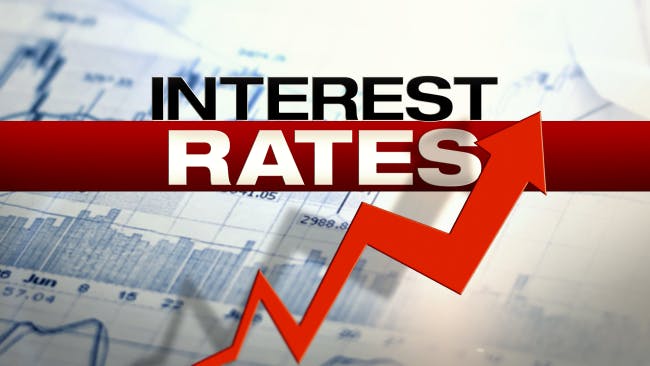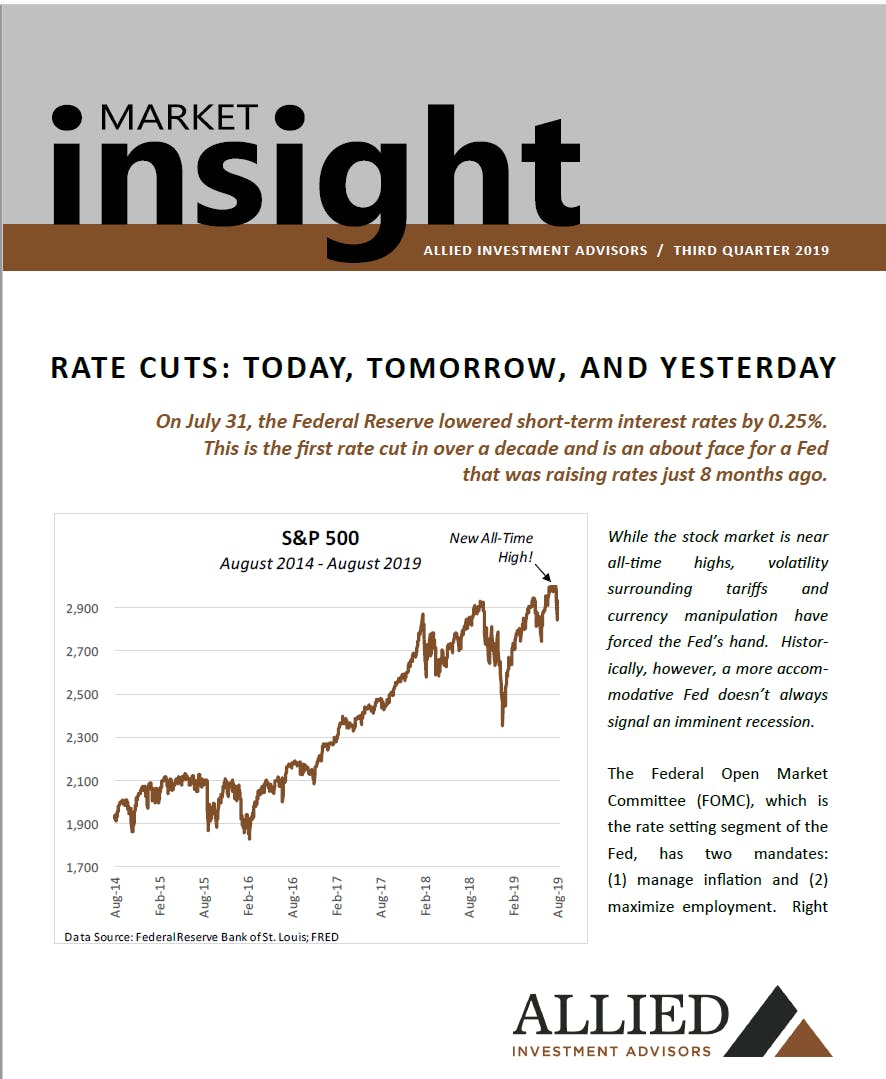Q3 2019: Rate Cuts - Today, Tomorrow, & Yesterday
August 12, 2019
On July 31, the Federal Reserve lowered short-term interest rates by 0.25%. This is the first rate cut in over a decade and is an about face for a Fed that was raising rates just 8 months ago.
While the stock market is near all-time highs, volatility surrounding tariffs and currency manipulation have forced the Fed’s hand. Historically, however, a more accommodative Fed doesn’t always signal an imminent recession.

The Federal Open Market Committee (FOMC), which is the rate setting segment of the Fed, has two mandates: (1) manage inflation and (2) maximize employment. Right now, both of those criteria are being met.
Inflation has been running near the Fed’s 2% target for the past eight years and is showing no sign of jumping higher. While wages are rising at a +3.2% pace, most consumer good’s prices are growing at +2.1% per year – which is the goldilocks scenario for the Fed: not too fast, not too slow.
Likewise, unemployment is running near its lowest level in 50 years at 3.7%, arguably below its natural rate as a strong domestic economy demands workers.
With inflation and unemployment managed (for the time being), the Fed is taking a more proactive approach, trying to head off “global developments” (their words). Most international markets aren’t doing as well as the US, with signs of economic weakness in China and throughout Europe. The FOMC does not want this weakness to spread to our economy.

There are also rising trade tensions. A stalemate on tariffs has bled over into a currency war. A prolonged trade dispute is a real risk for GDP growth and investor sentiment, as we’ve seen in recent weeks. The Fed wants to be ahead of those risks, providing the market a flu shot – an economic stimulus to help offset these issues – but the initial and on-going side effect is heightened volatility.
While a rate cut may spark volatility, is it an indicator of an oncoming recession? It was in 2001 and 2007, with both coinciding with severe bear markets.
If we look at every first rate cut back to 1982, however, the story changes. Outside of the early 2000s, it is rare for the market to sell off after a first rate cut. On average, the market is higher three, six, twelve, and twenty-four months after the initial cut. In the one- and two-year timeframes, the market is up +9.3% and +18.4% respectively, which are healthy average returns.
Rate cuts don’t always signal a weakening economy. In 1995 and 1998, the Fed made mid-course corrections. Both times saw the central bank reducing rates as insurance against international risks, even though there was no sign of a recession on the horizon.
What rate cuts do show is a risk event. In the past, most rate reductions have happened in the latter half of an economic expansion, a time when reaching for growth is no longer advisable. With the current expansion over a decade old, we can argue that we are in the second half of this cycle.

While we don’t want to throw in the towel on this bull market, we can make some risk reducing moves:
Focus on conservative stocks, with high quality balance sheets. History has shown that these stocks hold up better in times of market turmoil.
While value has underperformed growth in recent years, long-term studies give the edge to value, which also comes with defensiveness in bear markets. At this point, we view value as a good contrarian pick.
Now is also a good time to double-check your asset allocation. Are you comfortable with the risk characteristics of your investment objective? With the market near all-time highs, now is a good time to review before the stress of a market downturn. We’d be happy to discuss at your convenience.
In recent quarters, we have been moving our portfolios to focus more than ever on defensive, high quality stocks with attractive valuations. While we don’t view the recent policy change by the Fed as a recession warning flag, the risks brought on by the trade dispute make it a good time to improve the quality of our portfolios.
If you have any questions about your account(s), or if there has been a change in your financial situation or investment objectives, please feel free to contact our office to schedule a meeting.

